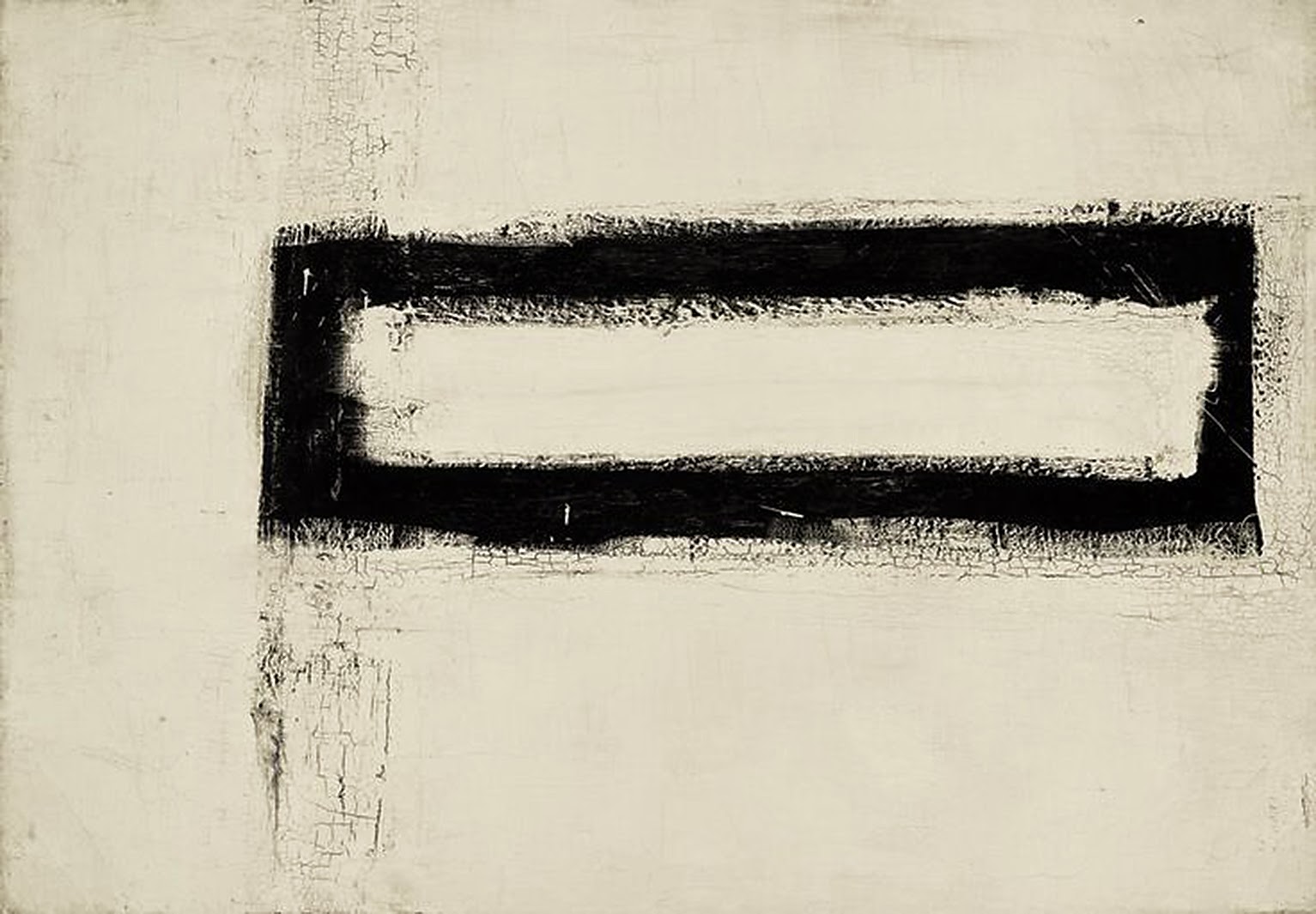Ad Reinhardt
This may be a really bad quality shot of an Ad Reinhardt painting, but it’s
also a brilliantly savy shot of an Ad Reinhardt painting and someone’s hand.
Reinhardt’s paintings were never meant to be photographed. He deliberately
tried to make his paintings un-photographable. The colour and surface
variations were so subtle that even today’s cameras can’t give an accurate
representation of what our eyes can see and adjust to when in front of
them. I imagine Reinhardt was a prickly character. His paintings were
about a focused refusal, just as his political cartoons satirised and revealed
the fallacies of certain facets of art world thinking. Whoever decided to put
his hand in front of this Reinhardt painting as the picture was being snapped
probably understood this very well.
Shaan Syed, 2014
Shaan Syed (CA/UK)
Stage Right (Dark Green Horizontal With Double Swipe)
2013
oil and polyfilla
on canvas
212 x 198 cm



%2BeditR.jpg)








%2C%2Bby%2BJoan%2BMiro%2C%2Bpastel%2Band%2Bpencil%2Bon%2Bflocked%2Bpaper%2C%2B42%2Bby%2B28%2Binches.jpg)








